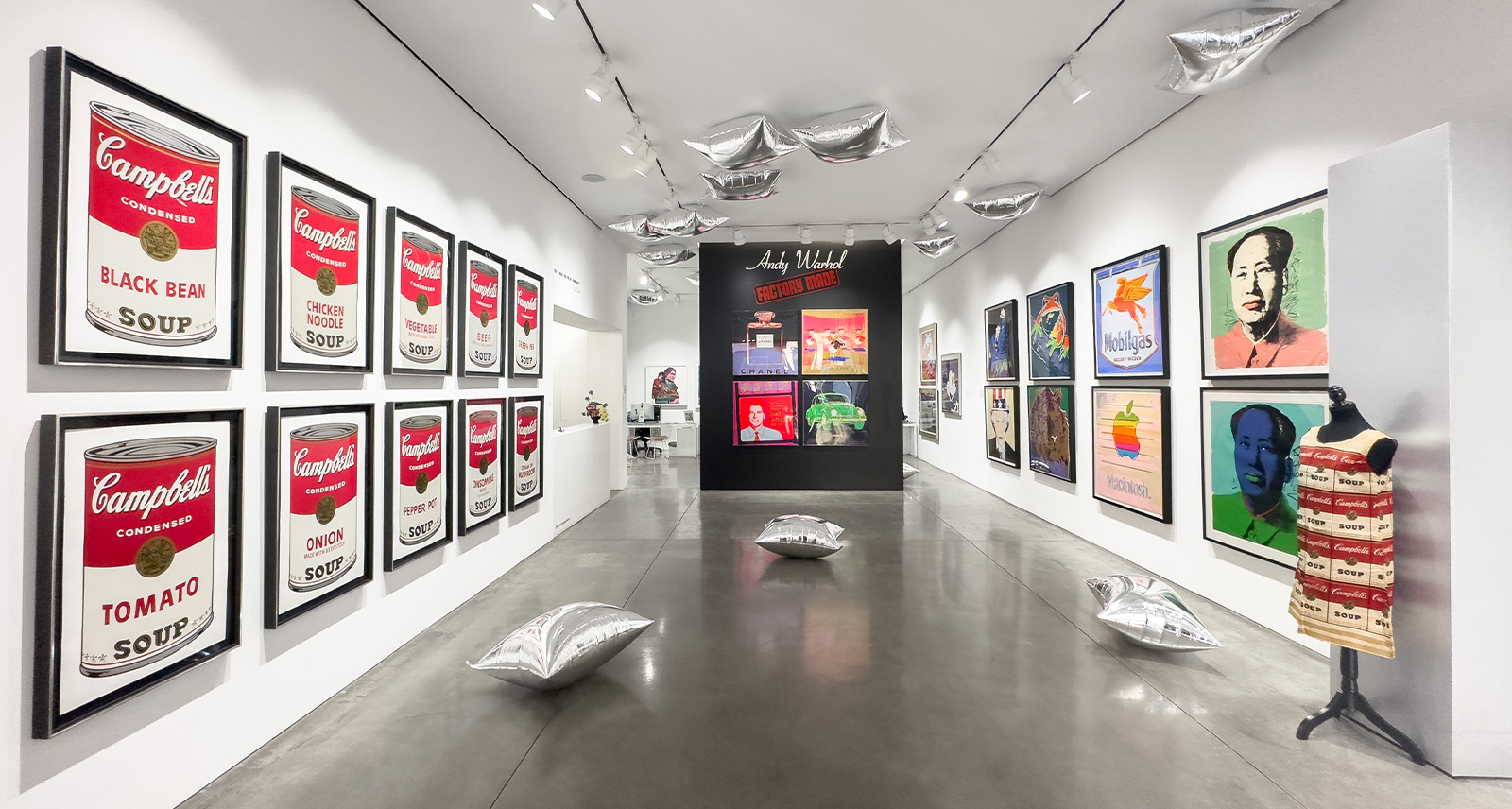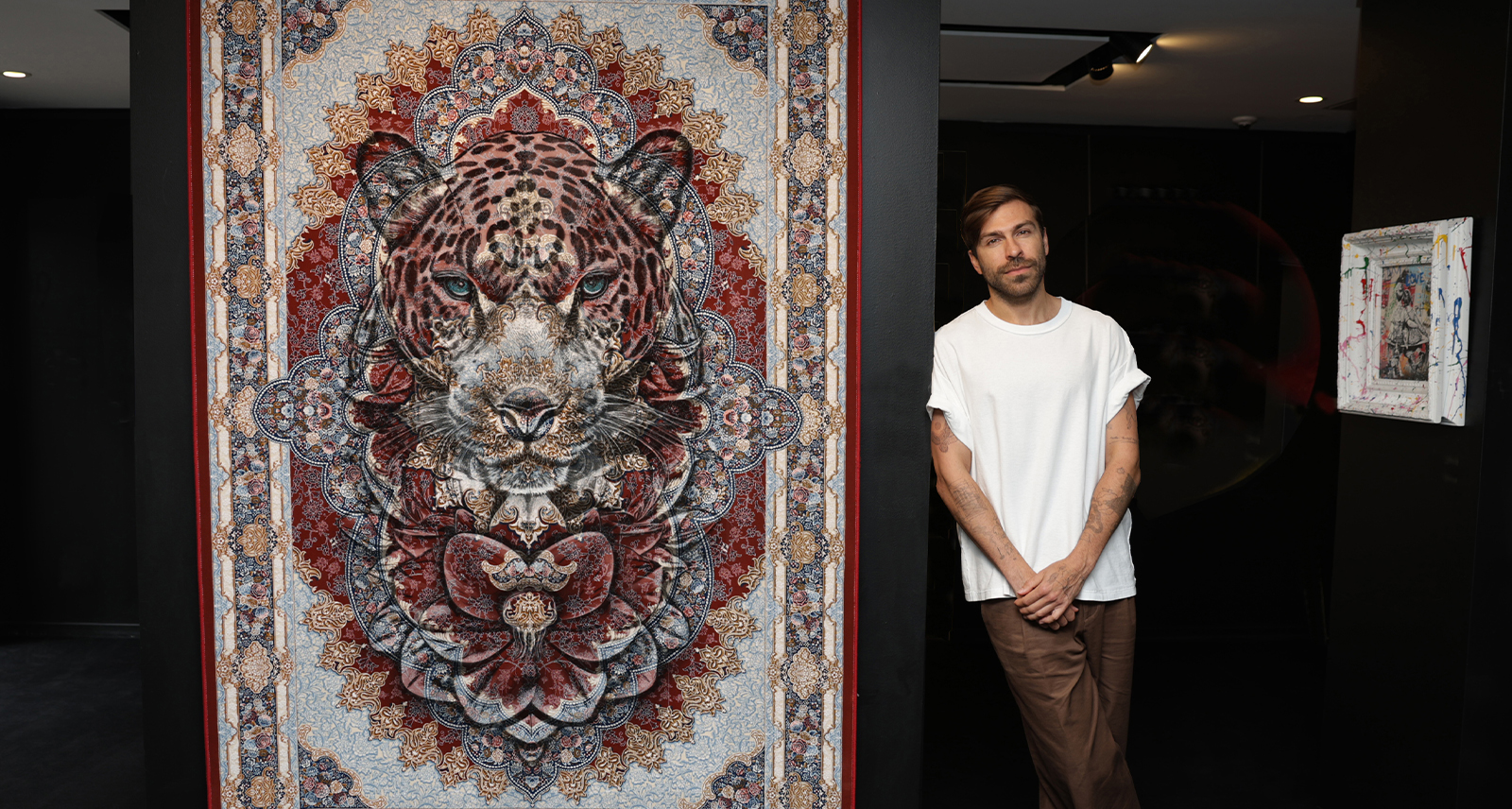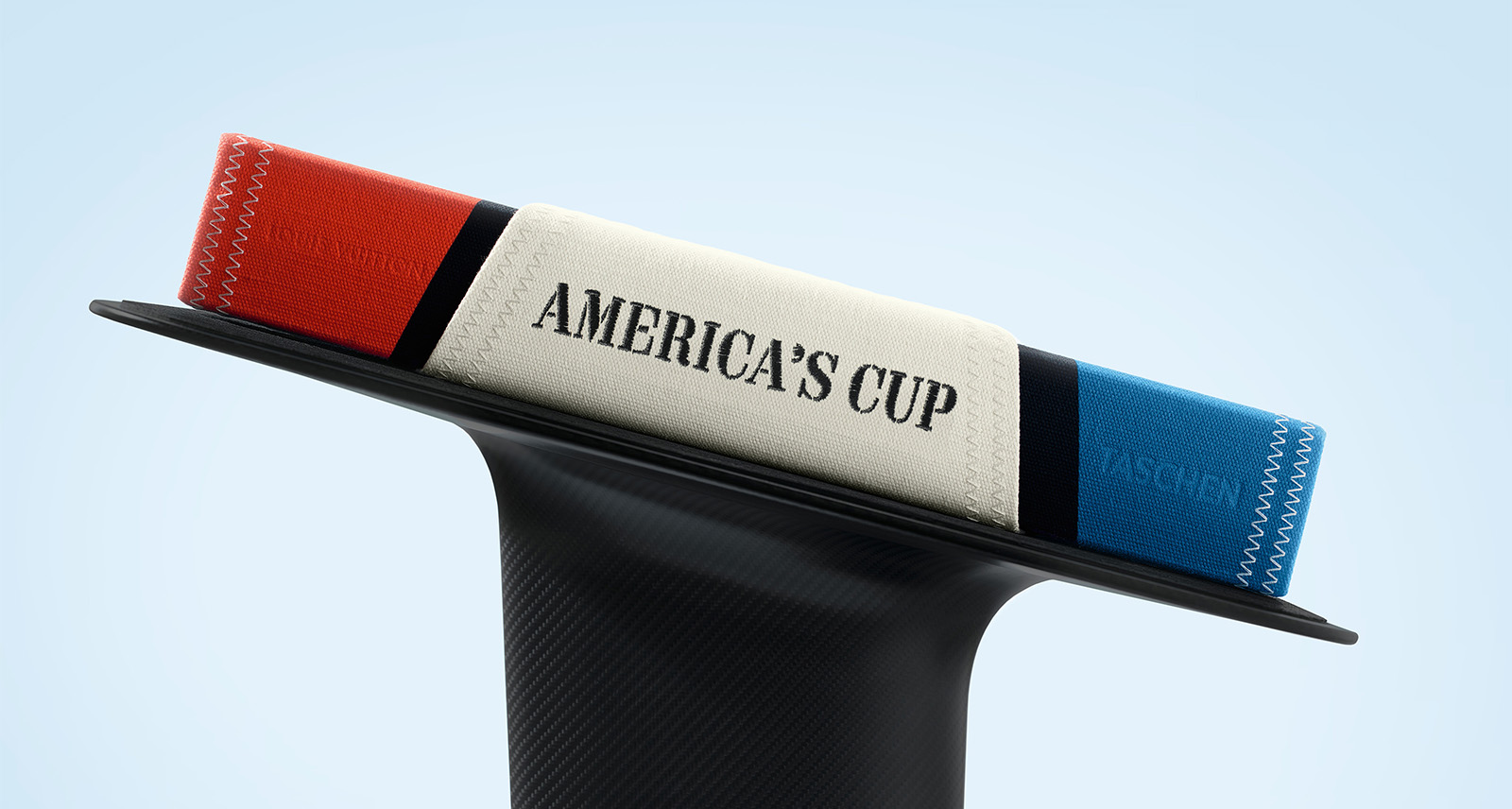From April 10th to May 1st, 2025, “Andy Warhol: Factory Made” will light up Toronto’s Taglialatella Gallery: a chic, contemporary space perched in the centre of Yorkville. When I speak to Alan Ganev, managing partner at Taglialatella, he’s in the thick of it: forty works — including prints, textiles, and a shiny silver wig — have just arrived from New York, where the travelling exhibition debuted last month. Gearing up for its next act in Canada’s largest city, the exhibition promises to impress.
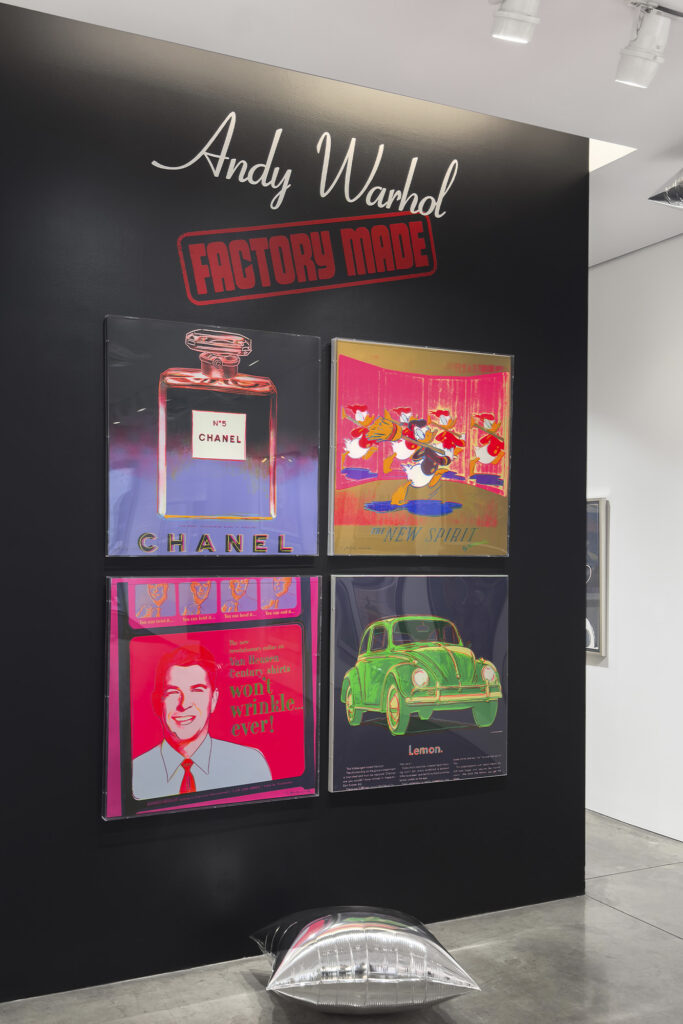

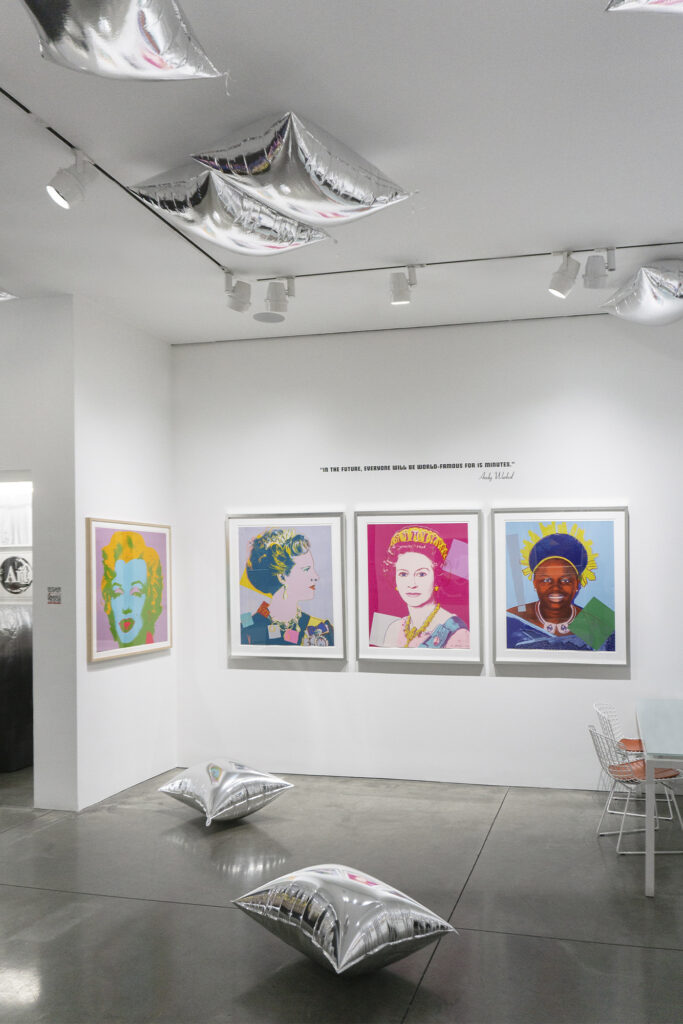
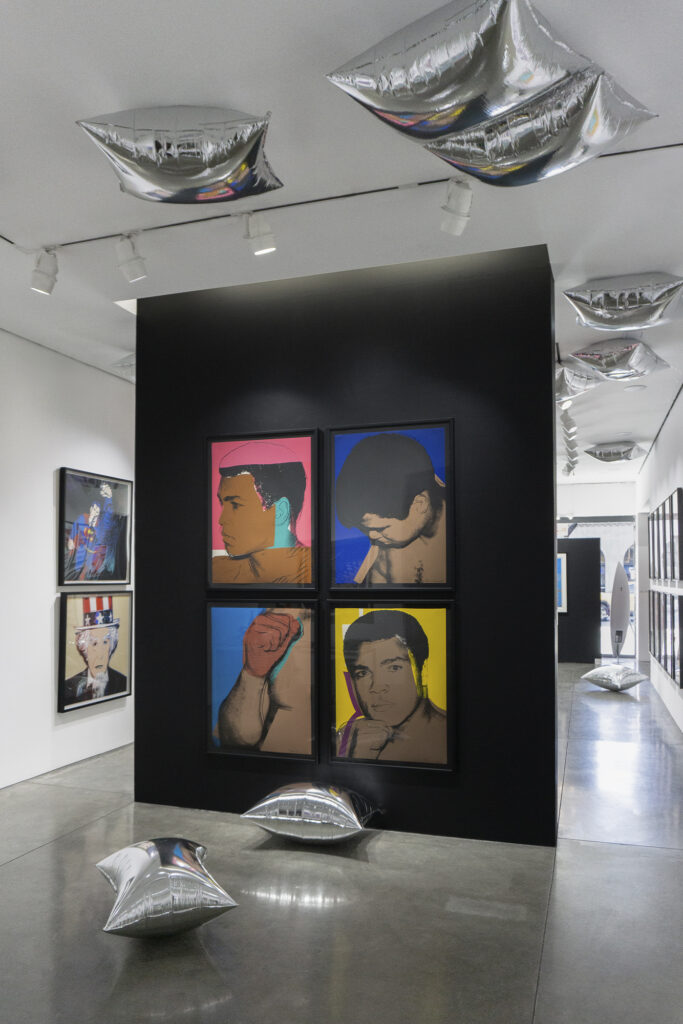
If Ganev is overwhelmed, he doesn’t show it: the gallerist is undeniably upbeat. Ahead of the opening, his enthusiasm is infectious. “It’s a special moment for us,” Ganev says. With “Factory Made,” the gallery comes full circle. Before Taglialatella was synonymous with ‘artistic empire’ — its international venues span from Palm Beach to Paris — the gallery was an exclusive New York operation known for its street-art focus.
“Dominic Taglialatella — where the name comes from — he dealt a lot with American Pop Art. So, he would have Jean-Michel Basquiat, Keith Haring, Andy Warhol, and Roy Lichtenstein,” explains Ganev. Thanks to these roots, the gallery cultivated a vibrant community of Pop Art enthusiasts — the same collectors who brought “Factory Made” to life.
“Certain artists have a particular kind of magnetism that’s hard to describe, and Andy Warhol is certainly one of those.”
Alan Ganev
Few Toronto spaces — aside from the Art Gallery of Ontario — have the means to organize a show on this scale, Ganev says. There’s a mountain of moving parts: securing consignments, coordinating logistics, and (of course) spreading the word. It’s an enormous feat, but for Ganev, high stakes only add to the excitement. “The exhibition not only carries the legacy of what Dominic started back in the late ’70s but, at the same time, the community can come and celebrate and learn,” he elaborates. “It’s one of those shows that checks all the boxes.”
Of course, Taglialatella is still a commercial gallery: all forty works are available for purchase. In fact, the title — named for Warhol’s studio, which he called “The Factory” — alludes to the artist’s knack for commerce. Warhol’s quick production and penchant for business proved ahead of his time. “Artists are so much more comfortable, in this day and age, with speaking about business and with business and marketing being such an integral part of their practice,” Ganev says. “Warhol was the pioneer of this concept; at the time, speaking about business, the way that he did in the context of art was taboo.”
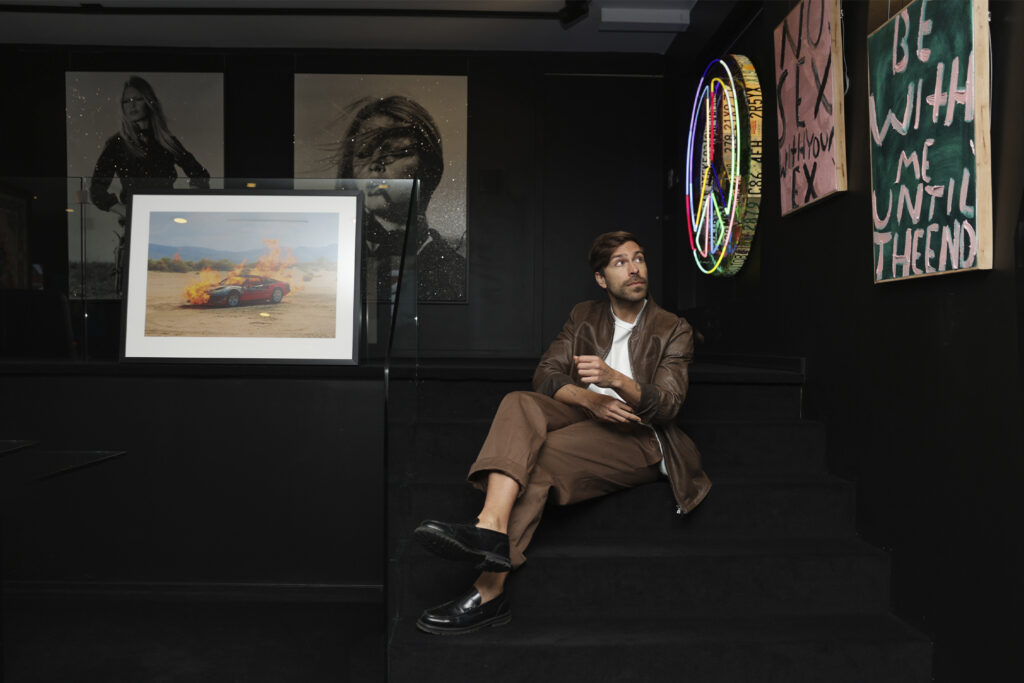
Warhol, along with his contemporaries, used Pop Art to blur the boundaries of culture and capital. The studio’s nickname, “The Factory,” was a tongue-in-cheek nod to his methodical silk-screen process; even today, six decades Warhol’s heyday with superstar Edie Sedgwick, Pop Art continues to spark debate among curators and consumers alike. Can culture be mass produced? Is it still art if it’s selling something? Does all art exist to sell something?
In Warhol’s work, these questions crystallize. As Ganev outlines Warhol’s process, his subversive style comes into focus. “[Warhol] would create an image — let’s call it, like ‘The Marilyn’ — and then he would make the Marilyn portfolio; it’s about ten different colour variations of the same image. Then, each colour variation is an edition. When you think of prints at that level, it’s very interesting to see how much he produced, and how valuable they became. If you look at a print by Andy Warhol, one of his iconic Marilyns is going to range anywhere between [USD] $150,000 to $300,000, sometimes even $400,000,” Ganev says. “It’s really interesting how he was able to create so many different points in the market and diversify his body of work.”
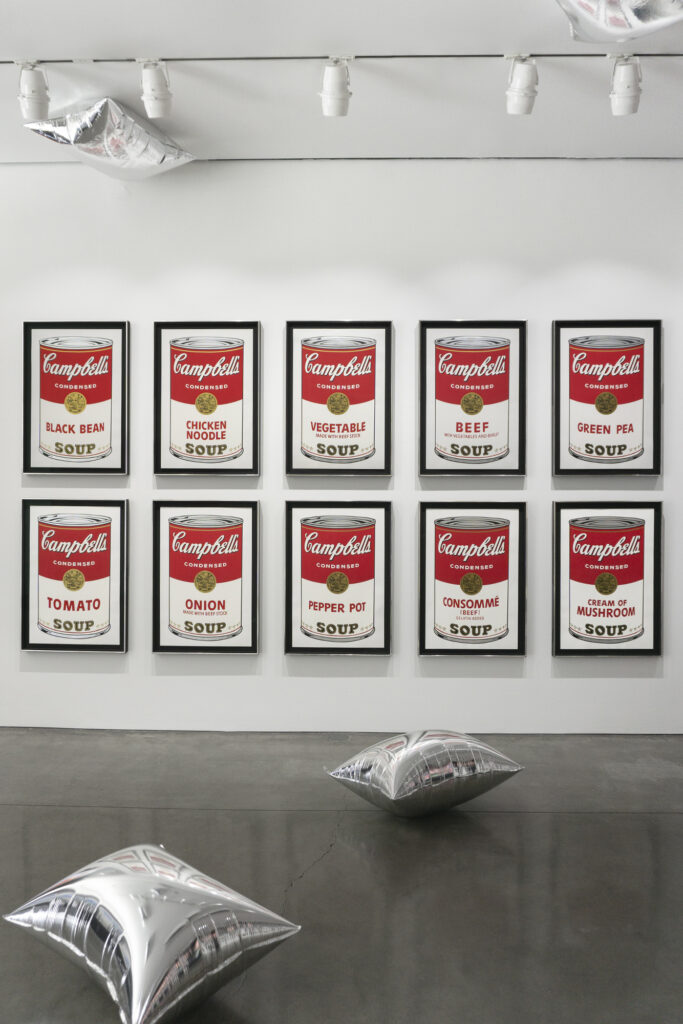
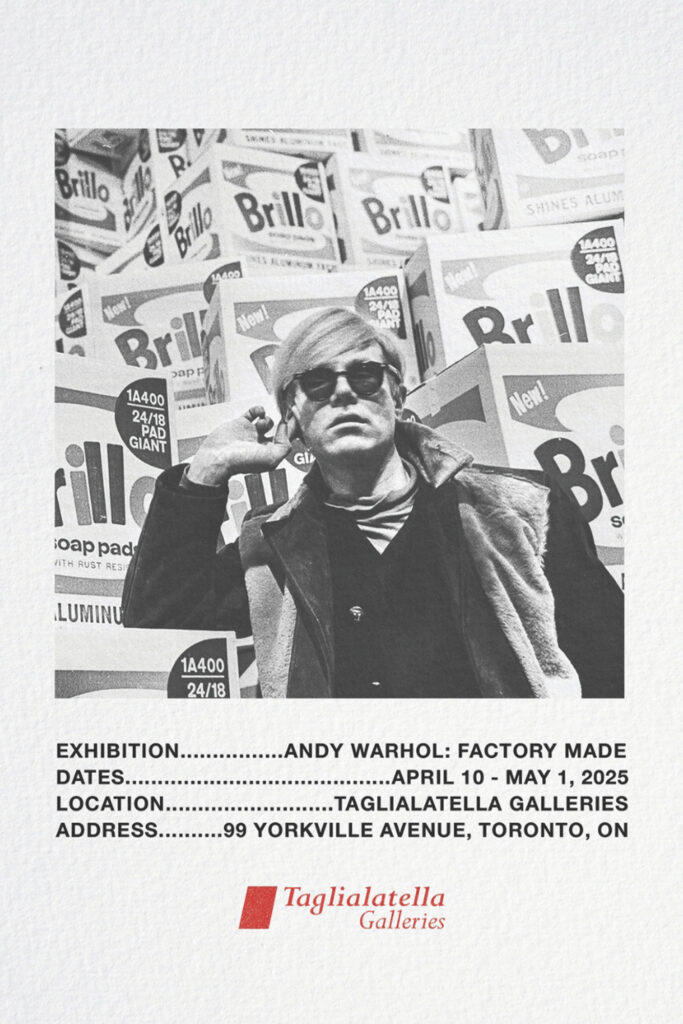
Even if you aren’t looking to purchase, the exhibition is a must-see. From floor to ceiling, it’s a visual marvel: vibrant prints cover the walls, while glittering silver accents beam in the natural light. One section is lined with rows of “Campbell’s Soup Cans,” a cheeky display that offers a window into the commercials and criticisms of a bygone era.
Ganev wants the show to speak to collectors and casual visitors alike. For the Toronto-based creative, it’s important to engage the neighbourhood in an organic way — a concept he has plenty of experience with. Outside of Taglialatella, Ganev puts his talents to work with Yorkville Murals, an outdoor festival that features eye-popping public installations across the area. “I think that’s when when things get really interesting — when you’re doing something for the community, for the city,” Ganev adds.
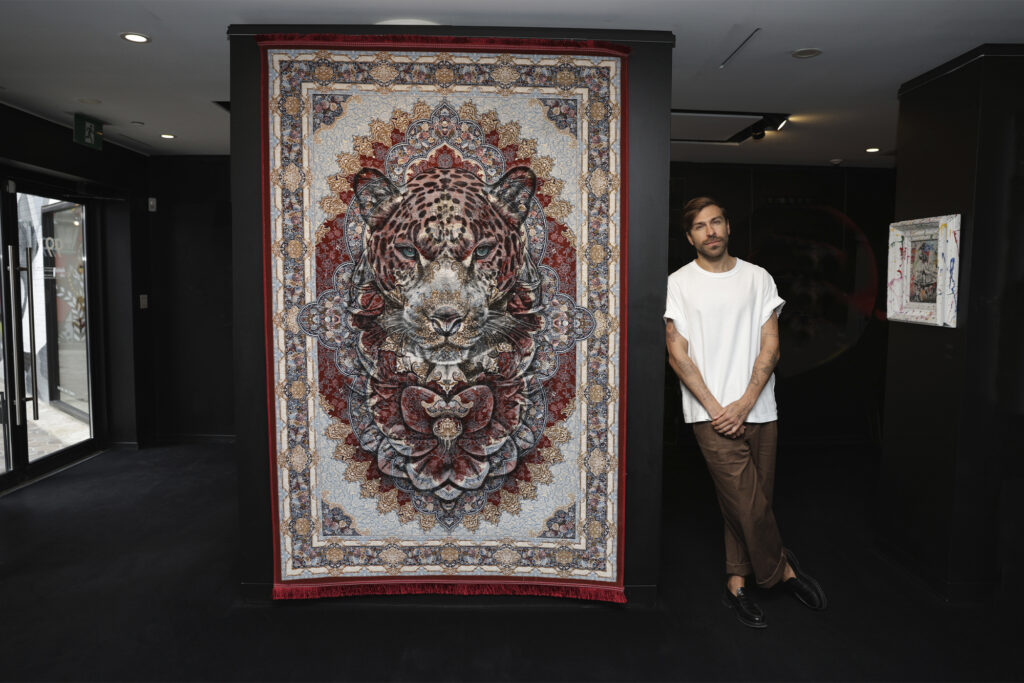
With “Andy Warhol: Factory Made,” Ganev synthesizes his love for community with the ethos of Taglialatella Galleries: a space brimming with colour and intrigue, at the crossroads of contemporary Canadian art and internationally-acclaimed creativity — with a street art-steeped legacy to boot. “Certain artists have a particular kind of magnetism that’s hard to describe, and Andy Warhol is certainly one of those,” Ganev adds. “What I hope that people get from the exhibition is that energy — that positive energy — that comes from being exposed to his work.”
“Andy Warhol: Factory Made” is now on-view at Taglialatella Galleries in Toronto.
